What It Feels Like to Climb a Skyscraper with Your Bare Hands

I’m terrified of death. Especially death I can’t control. Cancer, car accidents, random violence. I’m anxious about walking in Paris, where I live. I believe highway driving to be extremely dangerous. My mind constantly races through Final Destination death scenarios. What if that bike swerves? What if that truck driver falls asleep at the wheel? These possibilities eat at me.
The irony isn’t lost on me. I’m an urban free soloist. For the uninitiated, I climb skyscrapers without ropes, including the Burj Khalifa, the Montparnasse Tower, and buildings across La Défense. I dangle from my fingertips thousands of feet above the ground—sometimes I do pull-ups—and yet I am absurdly anxious about risks I can’t control.
On the ground, I’m a bundle of anxiety, helpless against these various risks. I’ve been this way forever; I had to go to extensive therapy as a child about my fear of death. But when I’m one thousand feet up the side of a building, gripping a minuscule ledge with my fingertips, I’m finally relaxed.
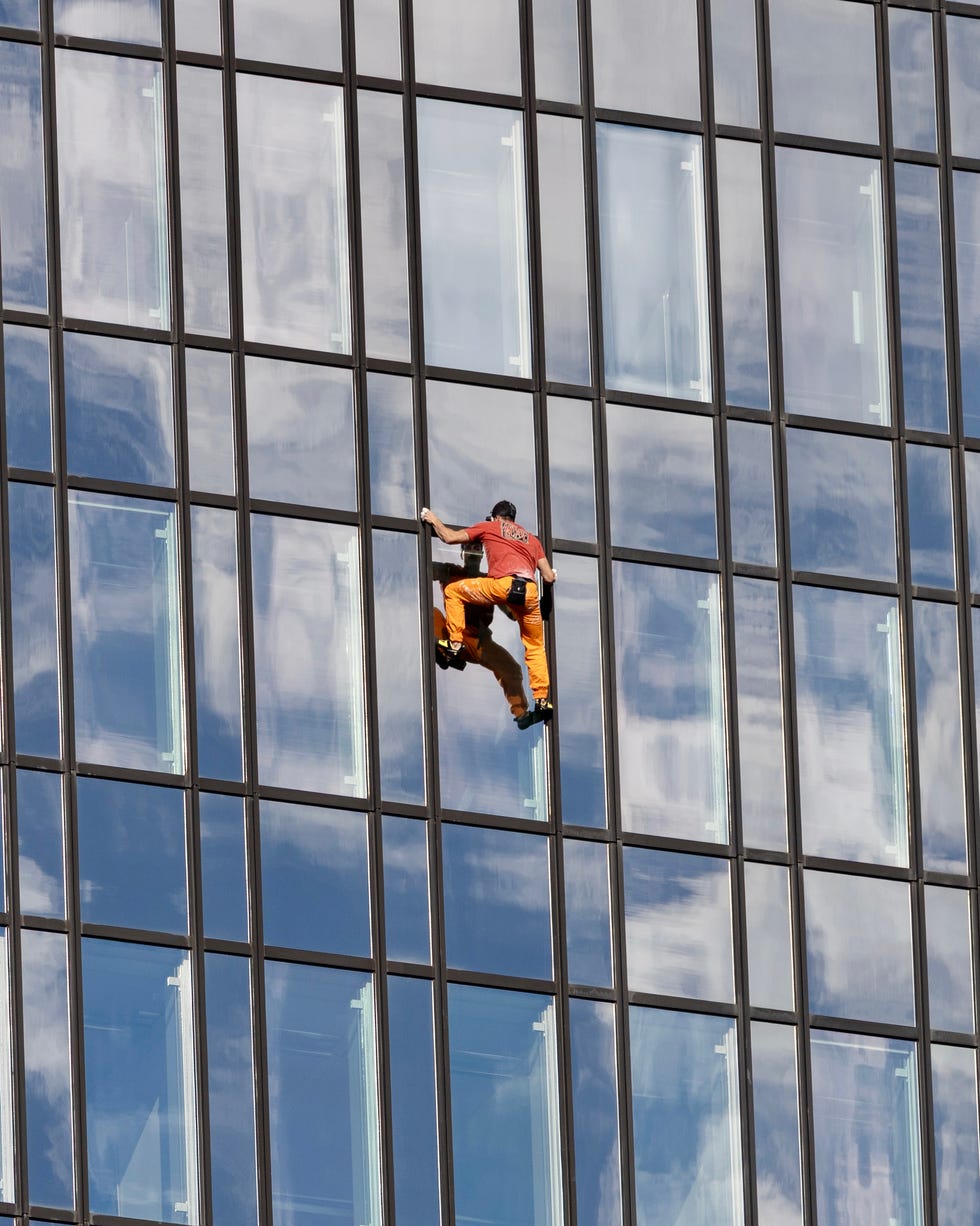
Welcome to the paradox of my existence: the only time I feel truly okay is when I’m risking everything.
The minutes before a climb are hell. Picture a drug addict receiving the worst news imaginable; that’s how I look and sound to my friends who help me prepare. My words tumble out fast and incoherent. My hearing shuts off. My peripheral vision narrows to a tunnel. My shoulders and arms feel like they’re made of lead. My knees go weak. I get goosebumps—what we call “chicken skin” in French.
The worst part? Cottonmouth. No matter how much I hydrate, my mouth goes completely dry. (I can’t drink too much water because I don’t want to pee midclimb.) In the final few moments before I start up any building, my entire body screams no. I have to force myself to override every survival instinct to step into that vertical world.
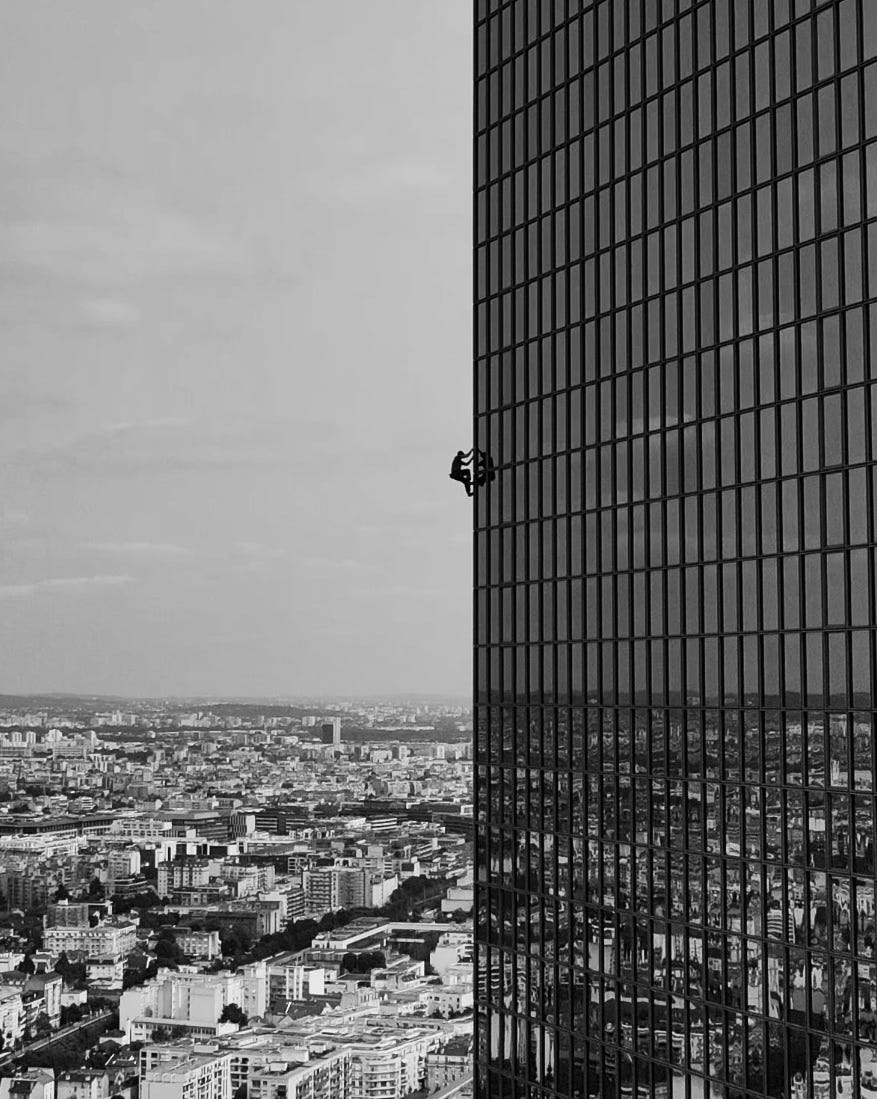
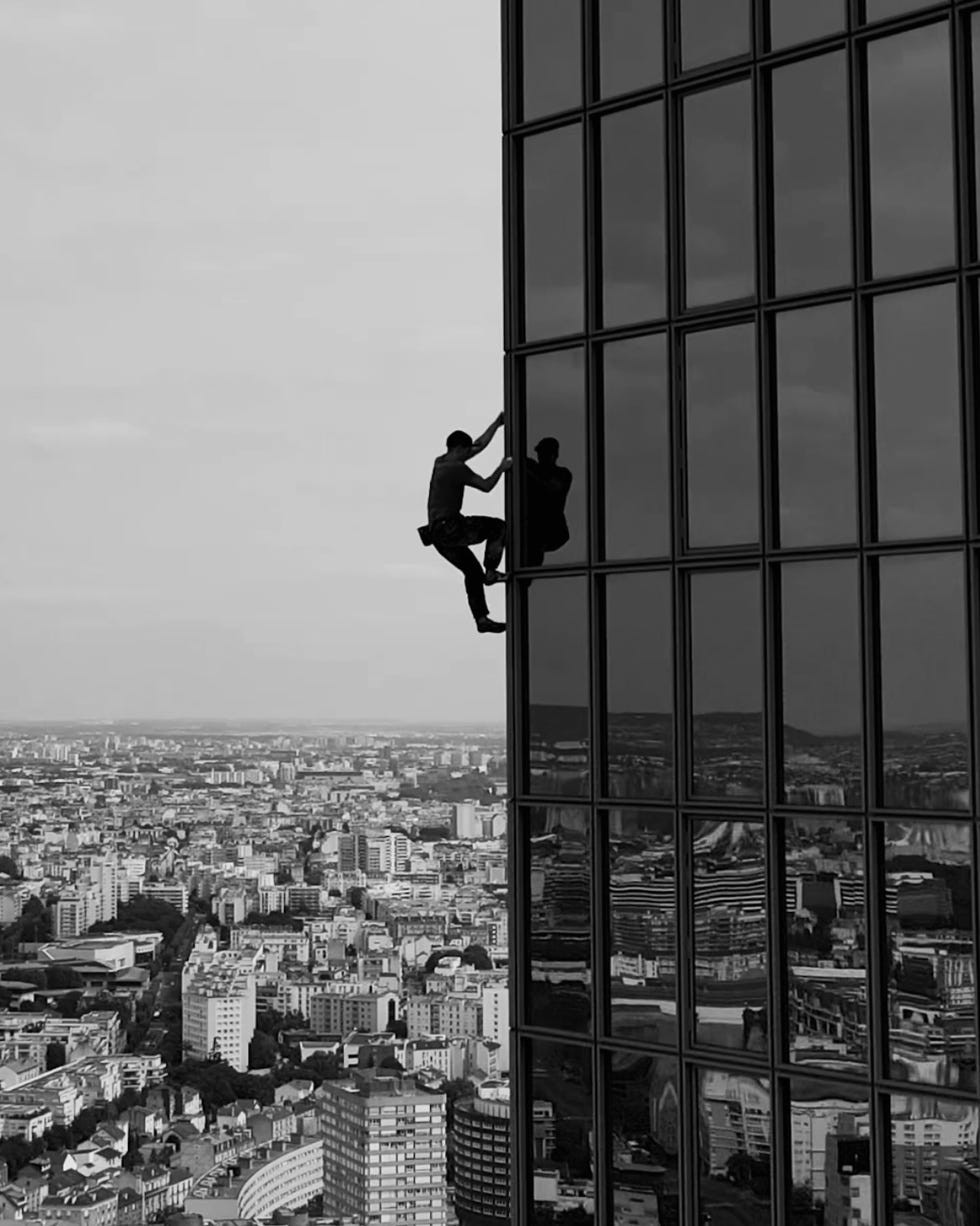
For the first forty or fifty feet, I feel like this. Then, once I leave the horizontal world and enter the vertical world—the point past which any fall will mean death—something magical happens. The tunnel vision clears. My shoulders lighten. My brain stops searching for phantom dangers because the danger is right here, real and immediate. This clarity is intoxicating. My mind can focus on one thing: keeping me alive.
My anxiety vanishes. I’m calm, peaceful, and present.
Climbing, my body operates on heightened autopilot. I’m acutely aware of every sensation. Am I getting tired? Is sweat about to drop onto my fingers? Is this window ledge solid enough for my full weight? But largely, I have few thoughts outside these. Just pure presence. Just the vertical world: holds, balance, breath. It’s the closest thing to meditation I’ve ever experienced, but it’s meditation with ultimate stakes.
People ask me what I remember most from various climbs. The truth is that I remember very little. When I watch GoPro footage of my climbs later, I’m often surprised by what I see. It’s as if another part of my mind takes over—a part that's been training for years, that knows exactly which three fingers to place on which tiny ledge, that can read the building's geometry like a language.
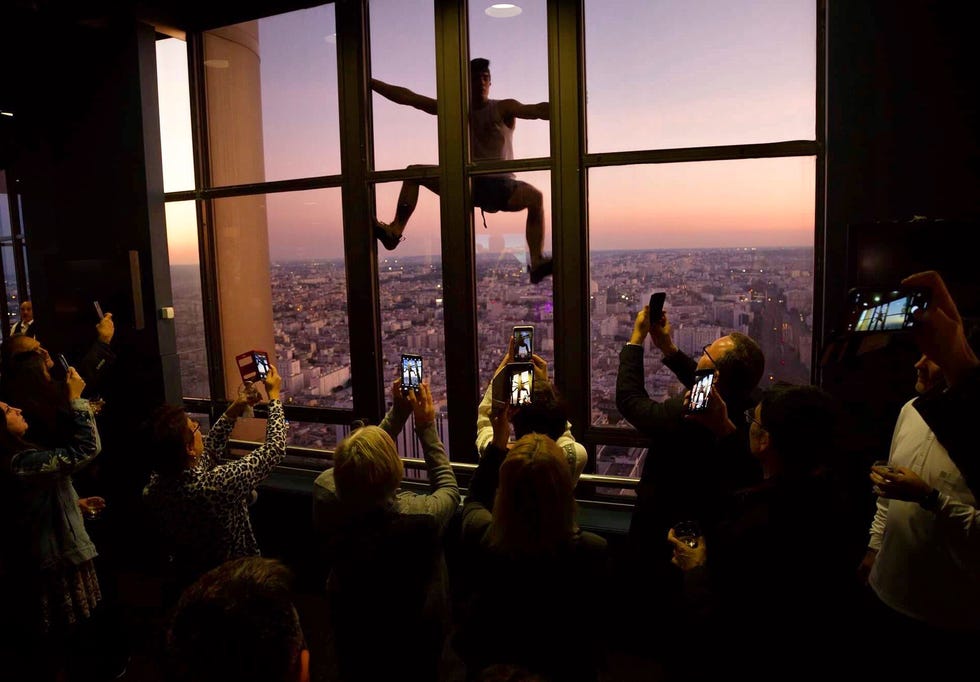
My grip strength isn’t superhuman. I’ve been tested; it’s good for an average human, but nowhere near a powerlifter’s or arm wrestler’s. What’s different is the specificity of that strength. I’m not making a fist; I’m using the tips of two or three fingers on holds that barely exist. It’s about technique, about understanding exactly how to distribute force across micro-surfaces.
This flow state breaks when I can see the top. Those last few meters are the hardest, not technically, but mentally. Suddenly I’m thinking again: What will I say to the police who are waiting for me? What will happen next? The floating, flowing feeling is gone, replaced by the return of ordinary consciousness. And it’s very intense.
When I choose a building to climb, height is irrelevant. What matters is whether I know myself well enough to complete it, whether I understand the building’s geometry, and whether there are rest points. Is this going to be a sprint or a marathon? Some buildings you can even sit on halfway up. Others require you to complete the entire climb without stopping. Only then does height matter, because you need to calculate your energy.
Critics call what I do reckless, and they’re right. It’s the most dangerous sport in the world. But these same critics take risks they’re not aware of every single day—drinking, doing drugs, driving carelessly—while being frightened of death. Being so scared of death, yet living as though you are immortal is a contradiction I’ll never understand.
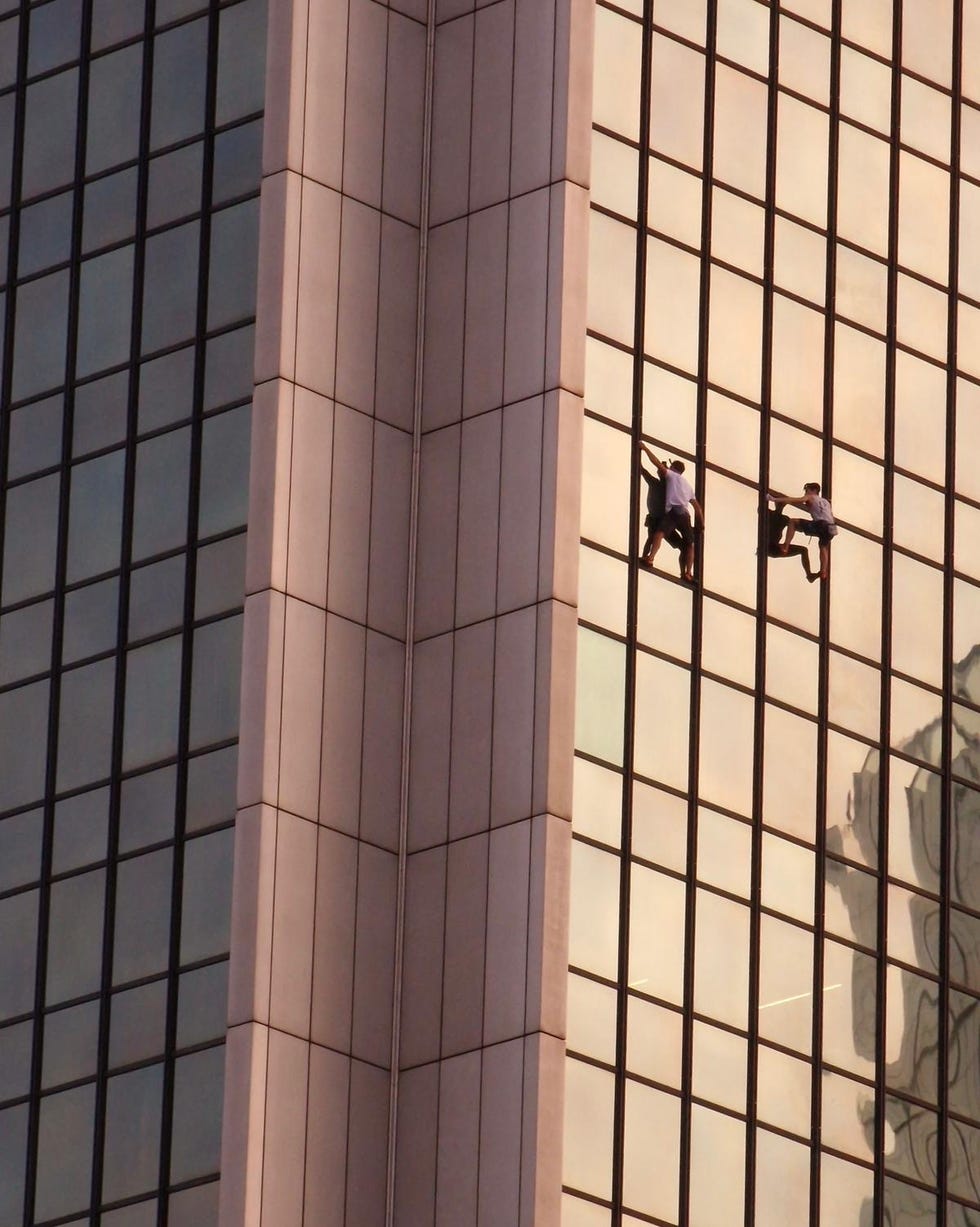
Some things you may think are risky, I think are normal. I started doing one-arm pull-ups as a means to get as strong as possible without gaining much muscle mass. Now I can do six on each arm. I’ve never felt as strong as when I do a one-arm pull-up in a death drop, 650 feet high. I’ve trained for years and, because there’s nothing above or below or around me, it feels like floating in space.
I’m incredibly cautious in daily life. I’m sober. I check multiple times before crossing the street. I see danger everywhere, but I choose to engage with it on my terms. I’d rather risk my life doing something that requires total presence and control than lose it to something random and meaningless.
People say I’m addicted to adrenaline, but that’s not it. I’m addicted to clarity. To be exactly where I am, when I am, with no room for my mind to wander into its catalog of catastrophes. For those precious and precarious minutes, suspended between earth and sky, I’m exactly where I need to be, doing exactly what I was meant to do.
I’m already planning my next climb.
esquire





